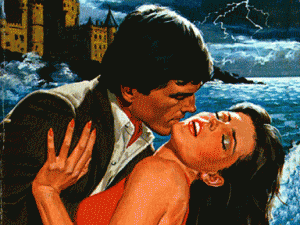How to Write a Romance Novel: 10 Tips You Can’t Ignore
 You say you want to learn how to write a romance novel? I don’t blame you. Romance novels are hot, and I’m not just talking about the stories they tell. In the U.S., romance novels command the largest share of sales over all other types of fiction. The large market means plenty of publishing opportunities for aspiring novelists.
You say you want to learn how to write a romance novel? I don’t blame you. Romance novels are hot, and I’m not just talking about the stories they tell. In the U.S., romance novels command the largest share of sales over all other types of fiction. The large market means plenty of publishing opportunities for aspiring novelists.
That doesn’t mean you can crank out any old story, add love scenes, and slap a romance label on it. Like other genres, romance has rules and conventions to follow. Learn the basics with these 10 tips and increase your chances for publishing success.
1. Read.
The first step in learning how to write a romance novel is reading. Visit your library or bookseller and gather at least three books from the romance section. Look for stories that appeal to you and read them as a writer. Analyze the novels to answer these questions:
- How long is the story?
- When does the conflict start?
- What is unique about the characters?
- How are the love scenes handled?
- How are the books similar to each other? How are they different?
2. Mix together the right ingredients.
Think of each romance as a different twist on a familiar recipe. The time periods, characters, and settings may change, but they all have the same basic ingredients at their cores. When you set out to write a romance novel, you need:
- A likeable couple (hero and heroine)
- A central conflict that arises from the characters’ efforts to build an emotional relationship
- A main plot focused on the trials and tribulations of the characters as they fall in love
3. Pack an emotional punch.
According to Lisa Whitefern at Romance Divas, one of the most common comments from editors rejecting romance manuscripts is “this story needs more emotional punch.”
What is this mysterious ingredient and how do you add it to your romance novel? Put simply, emotional punch comes when a reader develops a deep emotional attachment to the characters in your story. You can foster this attachment by creating three-dimensional characters with personalities, flaws, and histories.
4. Put your characters behind the wheel.
Remember that characters drive the plot of a romance novel, not the other way around. Everything that happens needs to be a direct result of their decisions and actions. If you need a good example of a character-driven story, look at the movie Titanic. The sinking of the ship is a huge historical event, but it’s merely a subplot in Jack and Rose’s ill-fated romance.
5. Move fast.
Your characters may wait a long time before they make a meaningful connection as a couple, but you want your readers to connect with the story much faster. In her post “Page 1: How to Start Your Romance Novel,” romance author Leigh Michaels advises, “The best beginnings show—within the first few pages or even paragraphs—the main characters under pressure and facing a challenge, a change in circumstances, or a threat that will significantly alter the rest of her life.” Use the opening pages of your romance novel to introduce the characters and conflict with a bang.
6. Be original.
While all romance novels contain similar elements, no two are exactly the same. Let your story flow from unique characters in original circumstances, instead of relying on romance novel clichés. In her post on how to write a romance novel, Anne Marble shares a list of Clichés to Avoid–Or Reconstruct. Among them are the Evil Other Woman/Ex-Wife/Relatives, Naïve Heroine, and Amnesia Plots.
7. Create an emotional rollercoaster.
Romance readers don’t want the easy story; they want the struggle and tension of two people fighting to find true love. That means that when you write a romance novel you must be prepared to give your characters a bad case of whiplash. Jerk them around. Give them hills to climb, unexpected drops, and corkscrew turns to survive before they make it to the end of the line (and into each other’s arms).
8. Don’t be a cheater, even if your character is one.
This piece of advice from Emma Coats, a story artist at Pixar, applies to any story–romance or otherwise: “Coincidences to get characters into trouble are great; coincidences to get them out of it are cheating.” Make your characters earn every break they get within the story. If they don’t, your reader will feel cheated.
9. Control the thermostat.
How hot should those sex scenes be? It depends on the type of romance you’re writing. In a “sweet” romance, the thermostat is set low. Kissing and hand-holding are the order of the day. No explicit details are shared. For a “sensual” romance, the thermostat is set a little higher. Love scenes are detailed, but not graphic. For “erotic” romance, crank the heat up as far as it will go and give all the details you’d like. Bonus tip: Each publisher has different guidelines for what is acceptable at each level, so be sure to check the writer’s guidelines if you’re uncertain.
10. Remember “happily ever after.”
No post about how to write a romance novel would be complete without this piece of advice: Romance readers expect the girl to get the guy and for everything to turn out well in the end. That doesn’t mean you have to have a perfect ending, but your story needs to finish on an upbeat note.




